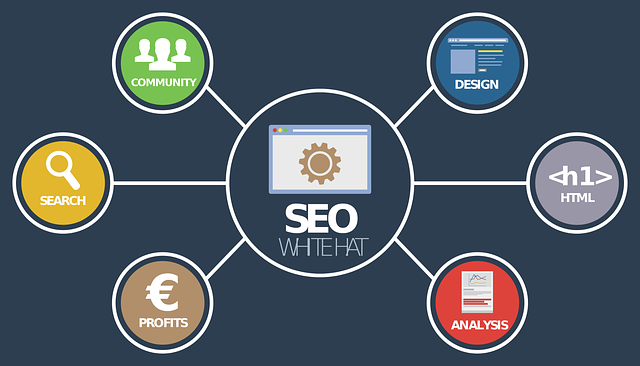AI chatbot integrations with OpenTable empower restaurants to revolutionize sales forecasting and customer engagement. By leveraging historical data, real-time insights, and machine learning, these chatbots predict future dining trends, optimize staffing, inventory, and marketing strategies, and drive revenue growth through personalized recommendations and dynamic pricing. This innovative approach enhances the overall dining experience, increases table turnover rates, and allows restaurants to make data-driven decisions in various aspects of their operations.
“Revolutionize your business sales forecasting with AI! This comprehensive guide explores the transformative power of artificial intelligence in predicting and optimizing restaurant revenue. We delve into the benefits of AI business sales forecasting solutions, especially with seamless AI chatbot integrations on OpenTable. Learn how these innovations enhance customer interactions, streamline operations, and boost sales. From understanding the fundamentals to implementing step-by-step strategies, discover why AI chatbots are game changers for restaurants seeking efficient and precise sales forecasting.”
- Understanding AI Business Sales Forecasting and Its Benefits with OpenTable Integrations
- How AI Chatbot Integration Enhances Sales Forecasting for Restaurants Using OpenTable
- Implementing AI Solutions: A Step-by-Step Guide for Optimizing Sales Forecasting with OpenTable
Understanding AI Business Sales Forecasting and Its Benefits with OpenTable Integrations

AI business sales forecasting leverages advanced algorithms and machine learning to predict future sales trends based on historical data, market patterns, and real-time insights. By integrating AI chatbots with OpenTable, restaurants can streamline their sales process and gain valuable customer intelligence. These AI chatbot integrations with OpenTable offer numerous benefits, such as automated reservation management, personalized recommendations, and dynamic pricing strategies.
With AI-driven forecasting, restaurant managers can make data-backed decisions about staffing, inventory, and marketing efforts. By understanding customer preferences and behavior through AI chatbots, businesses can enhance the overall dining experience, increase table turnover rates, and maximize revenue potential. This integration not only improves operational efficiency but also fosters stronger customer relationships by providing tailored services and offers.
How AI Chatbot Integration Enhances Sales Forecasting for Restaurants Using OpenTable

AI chatbot integrations with OpenTable are transforming how restaurants manage sales forecasting, providing valuable insights that were previously difficult to acquire. These chatbots can analyze vast amounts of data from OpenTable reservations, customer preferences, and historical trends to predict future dining patterns. By learning from each interaction, they adapt to individual restaurant needs, offering tailored forecasts that account for seasonal variations, special events, and menu changes.
For restaurants using OpenTable, this means more accurate sales predictions, enabling them to optimize staffing levels, inventory management, and promotional strategies. Chatbots can also assist in personalized customer engagement by suggesting targeted marketing campaigns based on booking patterns and customer demographics. This level of data-driven decision-making empowers restaurant owners to stay competitive, enhance operational efficiency, and ultimately drive revenue growth.
Implementing AI Solutions: A Step-by-Step Guide for Optimizing Sales Forecasting with OpenTable

Implementing AI solutions for sales forecasting using platforms like OpenTable can dramatically enhance a business’s predictive accuracy and decision-making capabilities. Here’s a step-by-step guide to optimize your sales forecasting process:
1. Assess Current Sales Data: Begin by thoroughly analyzing your historical sales data available on OpenTable. Understand patterns, trends, and seasonal variations in restaurant reservations or table bookings. This foundational step ensures your AI model is grounded in accurate and relevant information.
2. Identify Key Predictors: Determine which factors significantly influence booking volume, such as day of the week, time of year, special events, or average spend per customer. These key predictors will serve as input variables for your AI chatbot integration, allowing it to learn and leverage these insights.
3. Select an AI Approach: Choose an appropriate AI algorithm for forecasting, like regression models or time series analysis. OpenTable’s API capabilities can facilitate seamless integration with AI chatbots, enabling them to process and predict booking trends based on historical data and identified key predictors.
4. Train and Test the Model: Train your AI model using a combination of past data and identify patterns. Validate its performance using separate testing datasets to ensure accuracy in forecasting future demand. Fine-tune the model as needed, optimizing hyperparameters for improved predictive power.
5. Integrate with OpenTable: Seamlessly integrate your trained AI chatbot into OpenTable’s reservation system. This allows real-time data feeding and automated forecasting updates, ensuring your sales team always has access to the latest insights.
AI business sales forecasting solutions, particularly those integrating AI chatbots with platforms like OpenTable, offer significant advantages for restaurants and businesses. By leveraging these advanced tools, companies can optimize their operations, improve accuracy in sales forecasting, and enhance overall efficiency. Through natural language processing and machine learning algorithms, AI chatbots provide valuable insights, automate data collection, and enable more informed decision-making. Embracing these innovations ensures businesses stay competitive and meet the evolving demands of the market.
